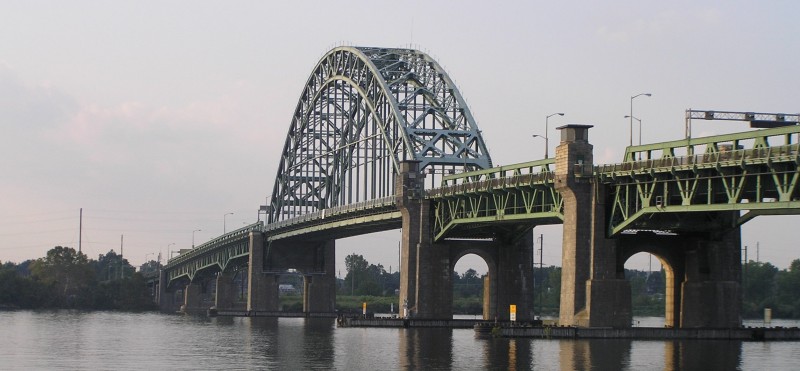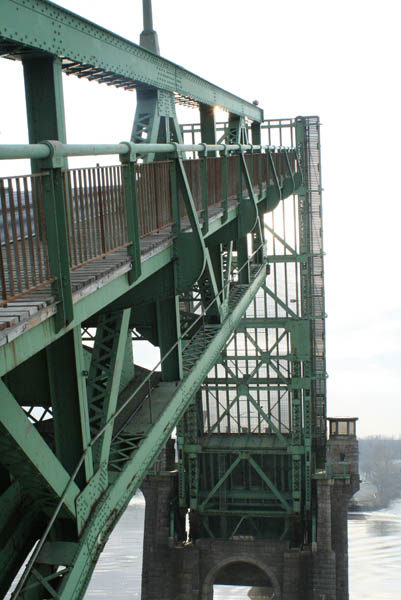
Tacony-Palmyra Bascule Span Monitoring
Dates: 2011-ongoing
Location: Tacony, Philadelphia, PA and Palmyra, NJ
PIs: F.L. Moon, A. E. Aktan,
Researchers: Matt Yarnold
Executive Summary
In 2007, shortly after the collapse of I-35W, Drexel formed a close partnership with Pennoni Associates, Inc. and the Burlington County Bridge Commission to aid in the preservation and renewal of the county’s long-span bridges. As part of the long term project, the initial installment of the Tacony-Palmyra Bridge structural health monitoring system has been implemented on the bascule span. The bascule span is a two-leaf rolling lift system that was originally constructed in 1929. Currently it still one of the longest bascule spans (260’-0”) in the United States. The age and importance of the structure require additional care to ensure its future performance, as it represents a critical link across the Delaware River for commerce and mobility. The health monitoring system will aid in the operational, maintenance, and engineering needs of the structure.
Project Description
A comprehensive structural health monitoring system has been implemented on the Tacony-Palmyra Bridge in Philadelphia, Pennsylvania. The health monitoring system was developed using the structural identification process along with a historic review and vulnerability assessment. The underlying objective of the project is to indefinitely preserve the structure by leveraging modern technology. As a result, the primary focus has been placed on addressing operational, maintenance, and engineering needs of the bridge. This was executed with the use of distributed data acquisition systems. The instrumentation includes electrical resistance and vibrating wire strain gages, tilt sensors, and a weather station.
Cameras located at select locations on and around the structure are integrated with data and video through the development of live web portals and a customized playback program. The live web portals allow for real-time remote viewing of the data and video over the internet by management and bascule span operators. The structural monitoring software includes the ability to record events such as bascule openings and overloaded vehicle passage. These events can be viewed in the playback program. This program allows the data to be viewed both spatially and temporally so as to maximized data interpretation and benefit for the end user of the structural health monitoring system. The system is also being equipped with trigger and alert functionality to send e-mail or text messages for specified events. In addition, an automatic reporting feature is being incorporated that will generate monthly reports, which will include short and long term reliability indices. The final goal will be to provide the bridge owner with an effective and reliable decision making tool to better manage their structure.











